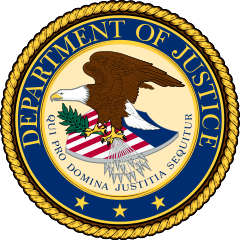Executive Summary
When the Department of Justice challenged the merger of AT&T and Time Warner on antitrust grounds in 2017, its main antitrust claim was that AT&T would use the valuable programming content from Time Warner, including HBO, CNN, and the Turner channels, to favor AT&T’s DIRECTV service over other program distribution services. Barely two years after the AT&T/Time Warner merger was completed, AT&T apparently is actively seeking to sell DIRECTV. Thus, the main business unit of AT&T that the DOJ asserted would benefit in an anticompetitive manner from combining the companies possibly may soon be separated from the source of the claimed anticompetitive leverage AT&T alleging was gaining.
This ironic turn of events shows the difficulty of making determinative assessments regarding competition and market power in light of the dynamism of the market and technological change. These ongoing changes impact business judgments on a continual basis. The important lesson for antitrust authorities is that they need to exhibit more modesty in making their assessments of the competitive landscape, especially in markets that are evolving and where rapid technological change is disrupting former sources of leverage over competitors.
AT&T and Time Warner at the time of the merger did not directly compete in any significant way, making this a vertical merger with no meaningful horizontal overlap between the companies. AT&T was a major multichannel video programming distributor through its DIRECTV satellite service. The Time Warner assets acquired by AT&T were primarily media and entertainment content providers.
According to the theory asserted by DOJ at the antitrust trial, if the combined company were to raise its rates for Time Warner programming, some video programming distributors would agree to pay more for the channels, which would mean more revenue for the merged company. Other rival programming distributors might choose not to pay. Before the merger, losing those distributors would mean more lost revenue to Time Warner than would be gained from charging the higher prices for programming. After the merger, the combined company could expect to recapture at least some of these revenues when some subscribers who want the channels switch to other video programming distributors, including DIRECTV. According to the DOJ theory, the combined company wouldn’t need all of these switchers to subscribe to DIRECTV, only a portion large enough to make such a price increase more profitable after the merger.
If DOJ was correct, after the merged company started to consider the effects of its pricing decisions on DIRECTV, the profit maximizing prices for Time Warner content would have been higher to the detriment of consumers in the market, and some consumers would end up with less access to the Time Warner channels. The burden under the antitrust laws was on the DOJ to persuade the court that the combined company would have the incentive to charge more for Time Warner channels than it did before the merger.
As Free State Foundation scholars and others pointed out at the time, there were clear reasons for skepticism regarding DOJ’s case. Today anyone with an Internet connection, including via their mobile broadband service, has many more choices than just AT&T, including Netflix, Amazon Prime, Hulu, Sling, and other Internet-based services, for receiving video content. As a result, no particular channels, including the Time Warner channels, have the same value that they once had. That means that any threats or actions to withhold the Time Warner channels will be less effective than they might have been a few years ago.
In light of these dynamic changes and the increasing competition among delivery services for video programming, as well as the efficiency benefits that AT&T argued would arise from the merger, DOJ faced a difficult burden in proving its case. After carefully examining the evidence presented at trial by DOJ, Judge Richard Leon concluded that neither DOJ’s main economic witness nor its other evidence, “provides me with an adequate basis to conclude that the challenged merger will lead to any raised costs on the part of distributors or consumers – much less consumer harms that outweigh the conceded $350 million in annual cost savings to AT&T’s customers (emphasis in original).”
Two years later, it appears that Judge Leon was correct. The anticompetitive harm from the merger, assuming for the sake of argument there was any, must not have been very large or AT&T would not be looking today to sell DIRECTV and separate it from the source of the alleged anticompetitive benefits from the merger.
Although it was DOJ that chose to litigate the case against the merger, it is also notable that AT&T had the opportunity to reach a settlement with DOJ in 2018 by agreeing to sell DIRECTV. Such a settlement would have avoided the trial, including millions in litigation costs and the costs of delays related to the trial. Evidently in 2018, AT&T thought that DIRECTV offered enough merger efficiencies and benefits to justify fighting to keep it.
For DOJ and other antitrust authorities, the costs from the government’s unsuccessful merger challenge fall not just on AT&T stakeholders, but more broadly on the taxpayers and on financial markets now less certain about when vertical mergers will be challenged. Hopefully, a lesson to be taken from the government’s unsuccessful challenge to the AT&T/Time Warner case is that more caution and modesty should be exhibited in making antitrust assessments in technologically dynamic markets that are undergoing rapid transformations.
Background on DOJ’s Antitrust Challenge of the AT&T/Time Warner Merger
In October of 2016, AT&T and Time Warner announced they had entered into an agreement under which AT&T would acquire Time Warner for $85.4 billion.1The purchase price was about $108.7 million if assumed debt is included. “AT&T to Acquire Time Warner,” AT&T Newsroom (October 22, 2016), available at http://about.att.com/story/att_to_acquire_time_warner.html. AT&T at the time of the merger was a major programming distributor through its DIRECTV satellite service and its UVerse wireline broadband service. AT&T bundled its AT&T-branded offerings, like cellular service, with both U-Verse and DIRECTV programming distribution services at a discounted price to its customers.2See, e.g., “DIRECTV Packages for AT&T Wireless Customers” (visited September 27, 2018), available at: https://www.att.com/att/DIRECTVwireless/en/.
The Time Warner assets acquired by AT&T were primarily media and entertainment content providers. Time Warner owns CNN (multiple channels), HBO (multiple pay channels), the Turner Broadcasting System (TBS, TNT, TCM, truTV, Cartoon Network, Boomerang, Turner Sports, et.al.), and Warner Brothers (Warner Brothers Pictures, Warner Brothers Theaters, Warner Brothers Television Group, DC Comics, and other assets).
AT&T and Time Warner at the time of the merger did not directly compete in any significant way, making this a vertical merger of a major multichannel video programming distributor and a major provider of programming, with no meaningful horizontal overlap between the companies. Time Warner previously owned Time Warner Cable, a horizontal competitor of DIRECTV, but it sold off its Time Warner Cable operations in 2009.
Over a year later, on November 20, 2017, the Department of Justice announced that it was challenging the merger as a violation of Section 7 of the Clayton Antitrust Act, the main antitrust law provision used by DOJ to challenge mergers it contends will lead to anticompetitive outcomes.”3Justice Department Challenges AT&T/DIRECTV’s Acquisition of Time Warner,” Press Release, U.S. Department of Justice (November 20, 2017), available at: https://www.justice.gov/opa/pr/justice-departmentchallenges-attDIRECTV-s-acquisition-time-warner. The DOJ challenge to the merger went to trial on March 19, 2018, and the trial lasted until April 30, 2018.4Ted Johnson, “AT&T-Time Warner Trial: Judge Says He’ll Have Decision in June,” Variety (April 30, 2018), available at: https://variety.com/2018/politics/news/att-time-warner-antitrust-7-1202792380/. On June 12, 2018, Judge Richard Leon issued his ruling, denying DOJ’s request for an injunction to stop the merger.5United States v. AT&T Inc., DIRECTV Group Holdings, LLC, and Time Warner Inc. (D.D.C., 2018), No.1:17-cv-02511-RJL, available at https://ecf.dcd.uscourts.gov/cgi-bin/show_public_doc?2017cv2511-146.
One month later, DOJ appealed the decision to the U.S. Court of Appeal for the District of Columbia.6Proof Brief of Appellant United States of America, United States v. AT&T Inc., DIRECTV Group Holdings, LLC, and Time Warner Inc. (August 6, 2018), No. 1:17-cv-02511-RJL, at 2, available at: https://www.justice.gov/atr/case-document/file/1085516/download. On February 26, 2019, the appellate court unanimously upheld Judge Leon’s ruling and allowed AT&T to complete the remaining steps toward merging the companies without conditions.7United States v. AT&T, 916 F.3d 1029 (D.C. Cir. 2019), available at: https://www.cadc.uscourts.gov/internet/opinions.nsf/390E66D6D58F426B852583AD00546ED6/$file/18- 5214.pdf.
The Main Antitrust Claim Raised in the Merger Litigation
DOJ claimed that the merger would allow AT&T to charge more for Time Warner programming or withhold Time Warner programming from cable rivals to place them at a disadvantage relative to AT&T’s DIRECTV. As a result, DOJ argued, cable television subscribers would be harmed by having to pay higher prices and less video content would be developed after the merger.8Complaint, United States v. AT&T Inc., DIRECTV Group Holdings, LLC, and Time Warner Inc. (November 20, 2017), No. 1:17-cv-02511-RJL, available at: https://www.justice.gov/atr/casedocument/file/1012916/download. In its complaint filed in the D.C. District Court, the Department of Justice claimed that if the merger was allowed to go forward:
AT&T/DIRECTV would hinder its rivals by forcing them to pay hundreds of millions of dollars more per year for Time Warner’s networks, and it would use its increased power to slow the industry’s transition to new and exciting video distribution models that provide greater choice for consumers. The proposed merger would result in fewer innovative offerings and higher bills for American families.1Complaint, US v. AT&T Inc., DIRECTV Group Holdings, LLC, and Time Warner Inc. (D.D.C. 2017) (No. 1:17-cv-02511), at 2, available at: https://www.justice.gov/opa/press-release/file/1012896/download.

According to DOJ’s theory, if the combined company were to raise its rates for Time Warner programming, some video programming distributors would then pay more for the channels, which would mean more revenue for the merged company. Other rival programming distributors might choose not to pay. Before the merger, losing those distributors would mean more lost revenue to Time Warner than would be gained from charging the higher prices for programming. After the merger the combined company could expect to recapture at least some of these revenues when some subscribers who want the Time Warner channels switch to other video programming distributors, including DIRECTV. According to DOJ, the combined company wouldn’t need all of these switchers to subscribe to DIRECTV, only a portion large enough to make such a price increase profitable after the merger.
Thus, the anticompetitive harm alleged by DOJ was that after the merged company starts to consider the effects of its pricing decisions on DIRECTV, the profit maximizing prices for Time Warner content will be higher, to the detriment of consumers in the market, and some consumers will end up with less access to the Time Warner channels. The burden under the antitrust laws was on the DOJ to persuade the court that the combined company would have the incentive to charge more for Time Warner channels than it did before the merger.
Free State Foundation scholars and others were critical of the DOJ theory at the time of the merger.9See, e.g., Randolph J. May and Theodore R. Bolema, “The Justice Department Will Need a Stronger Case Against the AT&T/Time Warner Merger,” Perspectives from FSF Scholars, Vol. 12, No. 43 (November 17, 2017), available at: https://freestatefoundation.org//wp-content/uploads/2019/05/The-Justice-Department-WillNeed-a-Stronger-Case-Against-the-ATT-Time-Warner-Merger-111717.pdf; Theodore R. Bolema, “The Proper Context for Assessing the AT&T/Time Warner Merger,” Perspectives from FSF Scholars, Vol. 13, No. 6 (February 8, 2018), available at: https://freestatefoundation.org//wp-content/uploads/2019/05/The-ProperContext-for-Assessing-the-ATT-Time-Warner-Merger-020818.pdf; Joshua D. Wright and Jan Rybnicek, “United States v. AT&T/Time Warner: A Triumph of Economic Analysis,” Competition Policy International, September 20, 2018, available at: https://www.competitionpolicyinternational.com/united-states-v-atttime-warner-atriumph-of-economic-analysis/; Geoffrey Manne, “There’s No Antitrust Case Against AT&T,” Wall Street Journal, November 21, 2017, available at: https://www.wsj.com/articles/theres-no-antitrust-case-against-at-t1511306560. Vertical mergers in general are less likely to raise competitive concerns than horizontal mergers, because they do not involve combining firms that compete directly and generally lead to significant benefits to the customers of the merged entities that usually greatly outweigh any potential anticompetitive harm.
Whenever antitrust agencies challenge a merger, they necessarily have to use models based on economic theory and market data to predict how consumer welfare will be affected by the merger. If they can persuade a court, by a preponderance of the evidence, that the merger will lead to more anticompetitive harm than benefits to consumers, then they can prevent the merger from going forward.
In the case of AT&T’s acquisition of Time Warner, there were clear reasons for being skeptical of DOJ’s antitrust case. As late as the early 1990s, the choice for most consumers was between one cable system and over-the-air television services received via their local antenna. But in the 1990s, important competition emerged in the form of satellite television services, including DIRECTV. Most consumers could then choose between their local cable provider and two satellite services, and, in many places, traditional telephone companies were beginning to provide multichannel video services as well.
Today anyone with an Internet connection, including via their mobile broadband service, has many more choices than that for receiving video content, including Netflix, Amazon Prime, Hulu, Sling, and other Internet-based services. As a result, no particular channels, including the Time Warner channels, have the same value that they once had. That means that any threats or actions to withhold the Time Warner channels will be less effective than it might have been a few years ago.10The most valuable Time Warner content that the combined company could use to place competing distribution services at a disadvantage is probably the suite of HBO channels. But those channels before the merger were available in many different ways. HBO can be purchased as a premium service from cable and satellite providers, as well as through the online SlingTV and Hulu services. The HBO Now app is also pre-loaded on all Apple TV for users of iPhones and iPads, and similar apps can be uploaded to Android, Amazon Fire, and Kindle devices. Dennis Restauro, “All the Ways to Watch HBO Without Cable,” Grounded Reason (July 7, 2017), available at: https://www.groundedreason.com/watch-games-of-thrones-without-cable/. Thus, if a competing cable service were to lose access to HBO, its customers likely could find it elsewhere, and at a similar price to what their cable service charged.
In light of these dynamic changes and increasing competition among delivery services for television programming, DOJ faced a difficult burden in proving its case. AT&T argued that various efficiencies resulting from the merger would lead to lower prices or improved service to its customers after the merger. DOJ disputed much of AT&T’s evidence of efficiencies, but its main witness conceded there would be at least some benefits to consumers.11United States v. AT&T Inc., DIRECTV Group Holdings, LLC, and Time Warner Inc. (D.D.C., 2018), No. 1:17-cv-02511-RJL, at 68, available at https://ecf.dcd.uscourts.gov/cgi-bin/show_public_doc?2017cv2511-146. Thus, the key question for Judge Leon at the trial was whether the anticompetitive harm the DOJ could demonstrate was enough to outweigh the efficiency benefits.
After carefully examining the evidence presented, Judge Leon concluded that neither DOJ’s main economic witness nor its other evidence, “provides me with an adequate basis to conclude that the challenged merger will lead to any raised costs on the part of distributors or consumers – much less consumer harms that outweigh the conceded $350 million in annual cost savings to AT&T’s customers (emphasis in original).”12United States v. AT&T Inc., DIRECTV Group Holdings, LLC, and Time Warner Inc., at 149. Two years later, it appears that Judge Leon was correct. The anticompetitive harm from the merger, assuming for the sake of argument there was any, must not have been very large or AT&T would not be looking today to sell DIRECTV and separate it from the source of the alleged anticompetitive benefits from the merger.
After the Merger
AT&T had the opportunity to reach a settlement with DOJ in 2018 by agreeing to sell DIRECTV.13Tae Kim, “AT&T CEO Says He Has No Intention of Selling CNN After DOJ Demands Sale as Condition for Time Warner Deal,” CNBC Marketplace, November 8, 2017, available at: https://www.cnbc.com/2017/11/08/doj-demands-cnn-or-DIRECTV-be-sold-as-condition-for-att-time-warnerdeal-approval.html. Such a settlement would have avoided the trial, including millions in litigation costs and the costs of delays related to the trial. Evidently at the time, in 2018, AT&T thought that DIRECTV offered enough merger efficiencies and benefits to justify fighting to keep it. Yet two years later, it appears that AT&T also may have misjudged how the DIRECTV business would fare in its dynamic and changing market. There have been various reports of AT&T seeking to sell DIRECTV over the last few months, which have intensified recently.14Nabila Ahmed and Scott Moritz, “AT&T Seeking Private Equity Buyers for Majority of DIRECTV,” Bloomberg, August 28, 2020, available at: https://www.bloomberg.com/news/articles/2020-08-28/at-t-is-said-to-seekprivate-equity-buyers-for-part-of-DIRECTV. One report estimated that the value of DIRECTV had fallen to $20 billion, less than half of what AT&T paid for DIRECTV in 2015.15Alexandra Steigrad, “Prominent Analyst Skeptical of AT&T/DIRECTV Sale Reports,” New York Post, August 31, 2020, available at: https://nypost.com/2020/08/31/prominent-analyst-skeptical-of-att-DIRECTV-salereports/.
Conclusion
The latest reports that AT&T is looking to sell DIRECTV is ironic as it comes after the DOJ went to court to make a vertical merger challenge to AT&T’s plan to combine Time Warner programming with DIRECTV. DOJ claimed that the effect of the merger would be to give DIRECTV an anticompetitive advantage over cable television systems through DIRECTV’s access to Time Warner programming. Now AT&T is looking to separate DIRECTV and Time Warner, making the antitrust concerns raised by DOJ largely go away. At the same time, AT&T probably could have settled the litigation in 2018 by agreeing to sell DIRECTV, likely at a higher price than a buyer will pay for DIRECTV today.
This outcome shows the difficulty of making determinative assessments regarding competition and market power in light of the dynamism of the market and technological change, for both the parties to the merger and to the antitrust enforcement agencies.
For the DOJ and other antitrust authorities, the costs from its unsuccessful merger challenge fall not just on AT&T stakeholders, but more broadly on the taxpayers and on financial markets now less certain about when vertical mergers will be challenged. Hopefully, a lesson to be taken from the government’s unsuccessful challenge to the AT&T/Time Warner case is that more caution and modesty should be exhibited in making antitrust assessments in technologically dynamic markets that are undergoing rapid transformations




